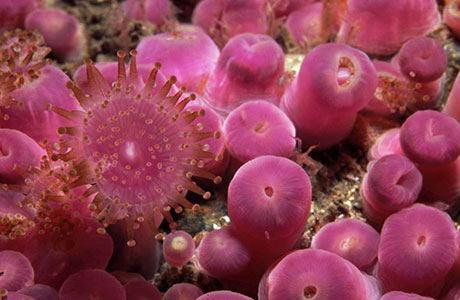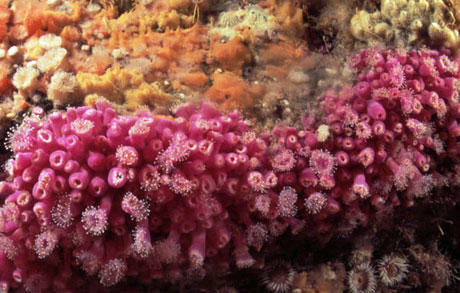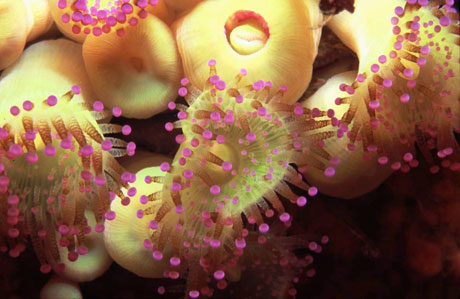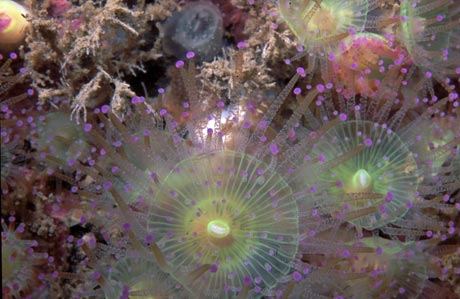Jewel Anemone, Corynactis viridis

Photo by Tim Nicholson.
Taken in The Azores.
30 September 2019
A myriad of colour patches cover the rock when jewel anemones make it their home.

The reason for the large patches of jewel anemones is their capacity for asexual reproduction. The adult anemone splits itself longitudinally into two which when repeated forms large colonies.

These flower-like animals, up to 2.5 cm (1″) across, prey on invertebrates which they have paralysed with nematocysts and caught with their 100 ball-tipped tentacles. They favour fast-flowing water, so look for them where strong currents occur from shore level down to around 80 m.

Water pressure inside the body maintains the anemone’s shape and provides a base for muscle action.

Different species of jewel anemones are found in temperate waters around the world. Corynactis viridis occurs around the British Isles, South West Europe and in the Mediteranean. C. californica (also known as the strawberry anemone) is found from San Diego to British Columbia. C. autralis lives around South East Australia.

Photo credits: Tim Nicholson.
Further Reading
Great British Marine Animals, by Paul Naylor
by J Studholme



